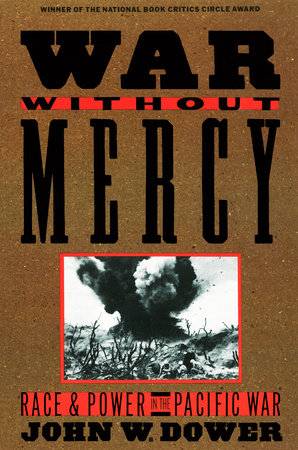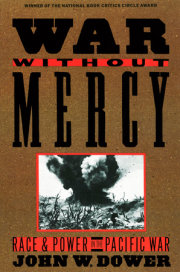PREFACE Some five years ago, while drafting the opening chapter to a projected book about the occupation of Japan that followed World War Two, I found myself mentioning in passing the race hates and merciless fighting that had been so conspicuous in the war in Asia and the Pacific. One of the impressive features of the occupation, after all, was that the defeated Japanese and victorious Allies, predominantly Americans, worked together so amicably and constructively. War-crimes trials were conducted after Japan’s surrender; reports of wartime atrocities preoccupied journalists and jurists for many months; and there was hardly a corner of Japanese society that was not subjected to critical scrutiny. The war hates themselves, however, seemed to disappear almost overnight—so quickly, in fact, that they are easily forgotten now.
In a world that continues to experience so much violence and racial hatred, such a dramatic transformation from bitter enmity to genuine cooperation is heartening, and thus the fading memories of the war pose a paradox. It is fortunate that people on all sides can put such a terrible conflict behind them, but dangerous to forget how easily war came about between Japan and the Western Allies, and how extraordinarily fierce and Manichaean it was. We can never hope to understand the nature of World War Two in Asia, or international and interracial conflict in general, if we fail to work constantly at correcting and re-creating the historical memory. At a more modest level, the significance of the occupation of Japan and postwar rapprochement between the Japanese and their former enemies can only be appreciated against the background of burning passions and unbridled violence that preceded Japan’s surrender in August 1945. The importance of remembering that visceral level of the war was what prompted my passing reference in that old draft manuscript on the occupation.
The casual mention of race hates seemed too abrupt to stand without elaboration, however, and my attempt to clarify what this meant marked the genesis of the present book. What occurred next may seem agonizingly familiar to many other historians. The passing comment was expanded to a paragraph, which grew into a section, then became a separate chapter, and finally emerged as a major research project in and of itself. This book is a summing up of some of the places to which this little “elaboration” has led—thus far. Meanwhile, the study of occupied Japan still sits unfinished on the shelf.
This is not the tidiest way to do history, but it is satisfying—for the problem arose naturally, more as a question than a thesis, and unfolded in unanticipated directions. To understand how racism influenced the conduct of the war in Asia has required going beyond the formal documents and battle reports upon which historians normally rely and drawing on materials such as songs, movies, cartoons, and a wide variety of popular as well as academic writings published at the time. In some academic circles these are not respectable sources, and they are certainly difficult to handle. But they are invaluable for re-creating the ethos which underlay the attitudes and actions of men and women during these years. The greatest challenge has not been to recall the raw emotions of the war, however, but rather to identify dynamic patterns in the torrent of war words and graphic images—and to bring such abstractions to earth by demonstrating how stereotyped and often blatantly racist thinking contributed to poor military intelligence and planning, atrocious behavior, and the adoption of exterminationist policies. Beyond this lay a further challenge: to explain how the contempt and hatred of the war years could have been dissipated so easily.
Because distorted perceptions and unrestrained violence occurred on all sides, the Pacific War also provides an excellent opportunity to look at racism and war comparatively—and, as the reader will discover, historically. Eventually, the exegesis on a passing comment led to an examination of perceptions of Self and Other in conflicts between “white” and “colored” peoples dating back to the fifteenth century. At the same time, it became apparent that many of the idioms of “race,” on both the
Western and the Japanese sides, are best understood in a larger context of hierarchical and authoritarian thinking. In the war in Asia—and in general—considerations of race and power are inseparable. As it turned out, much that may at first glance appear to be unique in the clash between Japan and the West in the early 1940s was, on the contrary, familiar in practice and formulaic in the ways it was expressed. And much of the explanation of how race hate gave way to an inequitable but harmonious relationship between victors and vanquished lies in appreciating the malleability of political language and imagery in general.
Copyright © 1987 by John W. Dower. All rights reserved. No part of this excerpt may be reproduced or reprinted without permission in writing from the publisher.








